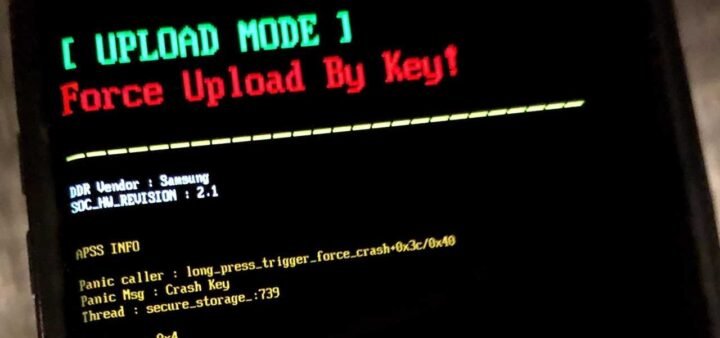How To Flash Samsung Phone
Flashing a Samsung phone can be a useful process for resolving software issues, updating the operating system, or even customizing your device with custom ROMs. However, it’s important to approach this task with caution, as improper flashing can lead to bricking your phone and voiding your warranty. In this comprehensive guide, we will explore different methods and tools for flashing a Samsung phone, emphasizing the necessary precautions and step-by-step instructions to ensure a successful flashing process.
How To Flash Samsung Phone- Understanding Flashing and its Benefits
Flashing a Samsung phone involves installing new firmware onto the device. Firmware serves as the underlying software that controls the device’s hardware and provides the user interface. By flashing new firmware, you can address software-related issues, introduce new features, and enhance the overall performance of your Samsung phone. It’s important to note that flashing your phone may void your warranty, so proceed with caution and only flash your phone if you are confident in your abilities.
Preparing for the Flashing Process
Before you begin the flashing process, it is essential to take a few preparatory steps to ensure a smooth experience:
- Charge Your Phone: Make sure your Samsung phone has a sufficient battery charge to prevent any interruptions during the flashing process. Ideally, the battery should be at least 50% charged or connected to a power source. A fully charged battery will provide the necessary power to complete the flashing process without any issues.
- Back Up Your Data: Flashing involves erasing all data on your phone. To avoid losing important files, contacts, or settings, create a backup of your data. You can use Samsung’s Smart Switch software or other third-party backup solutions for this purpose. Backing up your data will allow you to restore it after the flashing process is complete.
- Install USB Drivers: To establish a proper connection between your phone and computer, install the necessary USB drivers for your Samsung device. You can typically find these drivers on the official Samsung website or the software’s official support page. USB drivers enable your computer to recognize and communicate with your Samsung phone during the flashing process.
Method 1: Using Odin to Flash Firmware
Odin is a popular Windows utility recognized as the official tool for flashing software/firmware onto Samsung Galaxy devices. Follow these steps to use Odin for flashing your Samsung phone:
- Download Odin and Firmware Binaries: Find a trusted source to download the Odin software onto your Windows computer. Additionally, locate the correct firmware binaries for your specific Samsung device model. You can often find these firmware files on enthusiast sites like XDA Developers. Downloading Odin and the appropriate firmware binaries will ensure you have the necessary tools to proceed with the flashing process.
- Enter Download Mode: Power off your Samsung phone and then press and hold the appropriate key combination to enter Download Mode. The specific key combination may vary depending on your device model. Typically, it involves holding the volume down, power, and home buttons simultaneously. Download Mode allows your phone to communicate with Odin and facilitates the flashing process.
- Connect Your Phone to the Computer: Use a USB cable to connect your Samsung phone to the computer while still in Download Mode. Ensure that the connection is stable and recognized by the computer. A stable connection is crucial for the successful transfer of firmware files from your computer to your Samsung phone.
- Launch Odin and Add Firmware Binaries: Open Odin on your computer. Once the software is launched, you should see your device recognized in the Odin interface. Next, add the firmware binaries to the corresponding fields within Odin. These firmware binaries contain the updated software that you want to install on your Samsung phone.
- Initiate the Flashing Process: Double-check that all necessary options are correctly set within Odin. When you are ready, click the “Start” button to initiate the flashing process. Be patient and avoid disconnecting the phone during this phase. The flashing process involves transferring the firmware binaries from your computer to your Samsung phone and installing them on the device.
- Post-Installation Steps: After the flashing process is complete, your Samsung phone will automatically reboot. You can now safely disconnect your phone from the computer. To ensure a smooth transition, it is recommended to perform a factory reset or wipe the cache partition. These steps can help resolve any potential software conflicts and ensure optimal performance after flashing your Samsung phone.
Method 2: Using Alternative Flashing Tools
Aside from Odin, there are other software tools available for flashing Samsung phones. One such tool is DroidKit, which simplifies the flashing process and provides additional system issue fixes. The general steps for flashing with DroidKit are as follows:
- Prepare Your Phone: Follow the preparatory steps mentioned earlier, such as charging your phone, backing up your data, and installing Samsung USB drivers. These steps are crucial regardless of the flashing tool you choose to use.
- Download and Install DroidKit: Find a trusted source to download and install the DroidKit software on your computer. Launch the software once the installation is complete. DroidKit is an alternative tool to Odin that offers a simplified flashing process.
- Enter Download Mode: Similar to the Odin method, power off your Samsung phone and enter Download Mode by pressing the appropriate key combination. This step allows DroidKit to establish a connection with your phone for the flashing process.
- Connect Your Phone to the Computer: Use a USB cable to connect your Samsung phone to the computer while in Download Mode. Ensure a stable connection is established. The stable connection ensures a successful transfer of firmware files from your computer to your Samsung phone.
- Import Firmware File: Within the DroidKit software, locate and import the firmware file compatible with your Samsung phone. The firmware file contains the updated software that you want to install on your device.
- Start the Flashing Process: Once all necessary settings are in place, initiate the flashing process using the options provided within DroidKit. The software will guide you through the process and handle the installation of the firmware on your Samsung phone.
- Completion and Troubleshooting: After the flashing process finishes, your Samsung phone will restart. If you encounter any issues during the process, it is recommended to seek professional assistance or consult the official support channels. Professional assistance can help resolve any potential issues or complications that may arise during the flashing process.
Conclusion
Flashing your Samsung phone can be a valuable tool for resolving software-related issues, updating the operating system, or customizing your device. However, it’s crucial to follow the instructions carefully, ensure compatibility with your device and firmware files, and take the necessary precautions to avoid any potential risks.
Remember to back up your data, have a fully charged battery, and install the required USB drivers before proceeding with the flashing process. Additionally, always obtain firmware files and software tools from trusted sources to minimize the risk of encountering malicious software or incompatible firmware. If you feel unsure or uncomfortable with the flashing process, it is advisable to seek assistance from professionals or official support channels to ensure a successful and hassle-free experience.







